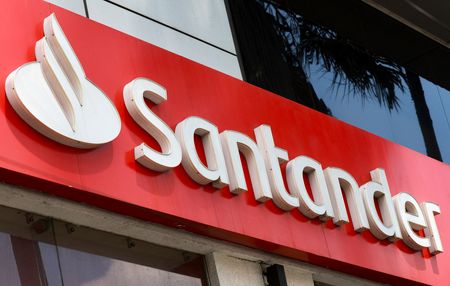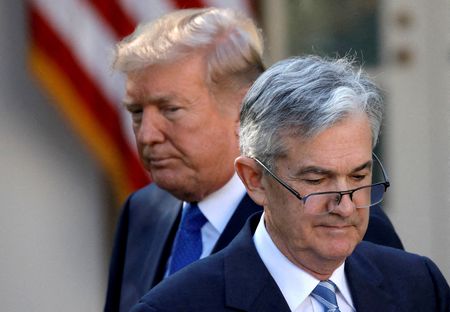By Jesús Aguado
MADRID (Reuters) -Santander stuck with its guidance for higher profits in 2025 on Wednesday after a strong performance from Spain and the U.S. in its second quarter offset some weaknesses in Brazil and Mexico.
Executive Chairperson Ana Patricia Botin said the bank’s geographical spread – it operates in ten core markets – would act as a stabiliser despite “continuing geopolitical uncertainty”.
The euro zone’s biggest lender by market value is strong in key Latin American markets such as Brazil, which in the past has given it an edge over more Europe-dependent rivals.
Santander reported a 7% rise in net profit in its second quarter, a fifth consecutive record quarter in a row, reaching 3.43 billion euros ($3.96 billion) in the April to June period.
However, quarterly net profit in Mexico, its fourth-biggest market, fell 6.8% against a backdrop of U.S. trade tariffs and the depreciation of the Mexican peso, while net profit in Brazil, its second-biggest market after Spain, declined 16%.
A rise of 2.4% in fees helped lift Santander’s return-on-tangible-equity ratio (ROTE) after the impact of additional Tier 1 (AT1) capital instruments, to 16.2% in the quarter, compared to 15.8% at the end of March.
The bank said it was on track to meet its target of around 16.5% this year.
Provisions were down 3% year-on-year in the quarter.
The bank also said it was on track to meet its full-year revenue target of around 62 billion euros, while its core Tier-1 capital ratio rose 10 basis points in the quarter to 13% by end-June, at the top end of the bank’s operating range of 12% to 13% after achieving the 2025 target ahead of schedule.
Santander shares were down 2% as of 0910 GMT, having risen around 70% so far this year.
Broker UBS expected a market correction, saying that the results were broadly in line with expectations.
The bank also announced a new share buyback of 1.7 billion euros set to begin on Thursday, representing around 25% of the group’s profit in the first half of 2025.
LOWER LENDING INCOME OFFSET BY EFFICIENCY
In Spain net profit rose almost 13%, helped by lower impairments and trading gains, while in the UK, where the bank recently struck a deal to buy Sabadell’s TSB, net profit fell 15% due to branch restructuring costs.
In the U.S., net profit rose 10% amid higher fees.
Overall, the bank’s net interest income, a measure of earnings on loans minus deposit costs, fell 1.2% year-on-year on underlying basis in the quarter to 11.34 billion euros, slightly above the 11.26 billion euros expected by analysts.
The efficiency ratio improved to 41.2% in the quarter from 41.8% at the end of the first quarter, driven by the bank’s transformation towards a more digital and integrated model.
Profit at its retail business, the main contributor to earnings of its five global units, and its consumer unit fell 2.7% and 9%, respectively.
Its wealth management unit jumped 14%, while its corporate and investment banking business rose 6%. Payments business booked a profit of 209 million euros compared to loss of around 90 million euros in the same period a year ago.
($1 = 0.8669 euros)
(Reporting by Jesús Aguado; additional reporting by Emma Pinedo; editing by Inti Landauro, Louise Heavens and Elaine Hardcastle)











